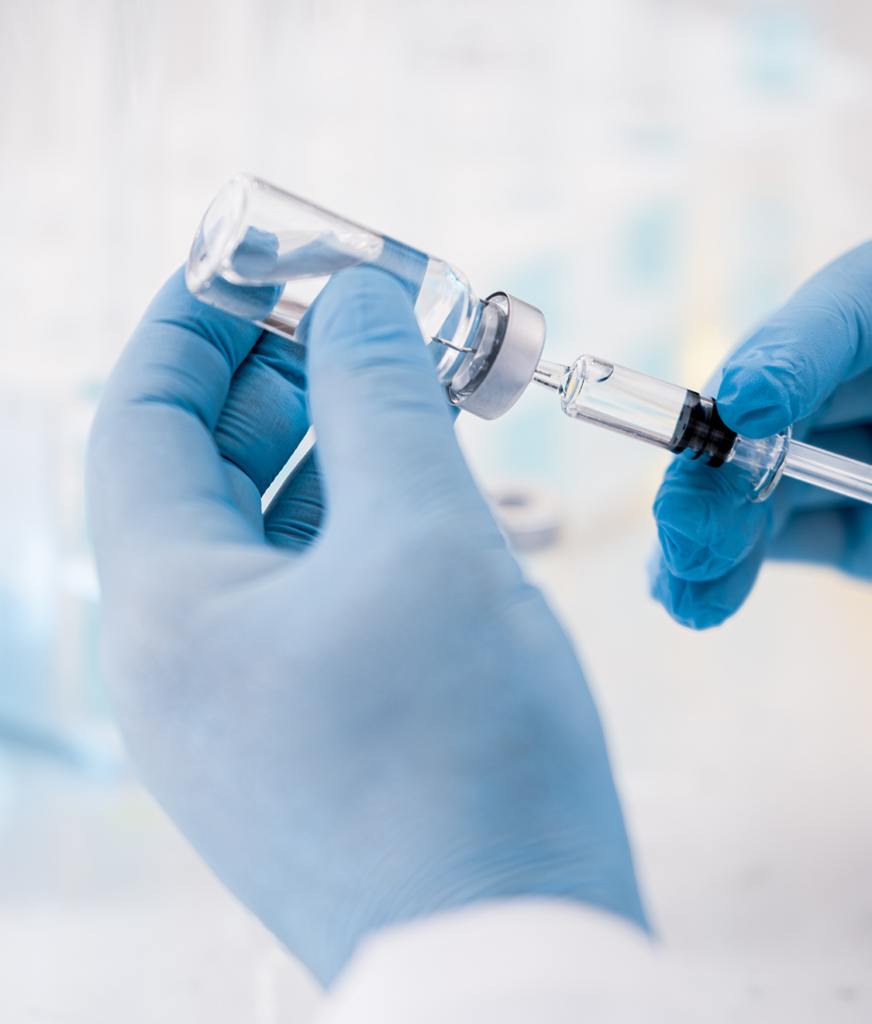
JDRF is committed to providing timely information about the latest research updates relevant to the diabetes community. Early January 2022 researchers from the Centers for Disease Control and Prevention (CDC) in the United States reported that children who have recovered from COVID-19 may be at an increased risk of being diagnosed with diabetes.

The CDC’s analysis was published in the organization’s January 7, 2022, edition of Morbidity and Mortality Weekly Report.
The New York Times reported the results January 7, 2022, (a subscription may be required to view full article).
According to The New York Times article, “…The CDC study is among the first to examine large insurance claim databases in the United States to estimate the prevalence of new diabetes diagnoses in children under age 18 who had COVID or were known to be infected with the coronavirus.”
It is important to note that the study—which does not differentiate between type 1 diabetes (T1D), type 2 diabetes (T2D) or any other form of diabetes—only highlights an association born out in the data examined.
The study does not identify how COVID-19 could cause (or provide evidence that it does cause) an increased risk of diabetes in children.
“As a research organization, JDRF will continue to analyze and update our community about these and other data related to COVID-19,” said Sanjoy Dutta, Ph.D., Vice President, Research, at JDRF International. “Other data globally have not shown an association between COVID-19 and diabetes onset, and we are in discussions with clinical leaders to further assess the evidence. In the meantime, we urge the public to be alert to signs of T1D and take steps such as vaccination to protect you and your loved ones.”
How was the study conducted?
The CDC study is based on a summary of findings from two U.S. medical claims databases, IQVIA and HealthVerity.
The examined data from the two databases focused on approximately 500,000 children under the age of 18 years who had a COVID-19 diagnosis between March 1, 2020, and June 28, 2021.
Diabetes incidence in COVID-19 positive individuals was 166 percent higher in the IQVIA cohort and 31 percent higher in the HealthVerity cohort (both compared to COVID-19 negative individuals).
There was no significant difference in diabetes incidence between the age sub-groups or sexes.
Additionally, there is no information in the examined data about other health conditions that could also be associated with a diabetes diagnosis (such as body mass index, blood pressure, etc.). It also does not account for race/ethnicity differences, or comparison with other cohorts that may have differential healthcare access (including less-than-adequate healthcare access).
A similar study has not been conducted in Canada with a Canadian cohort.

Prevention is still the best medicine. Vaccines and T1D
Getting vaccinated is everyone’s best line of defense against severe illness and hospitalization resulting from COVID-19.
All data show the approved COVID-19 vaccines are safe and effective for people with T1D. Vaccines were tested in people with diabetes (9.4% of Moderna, 8.4% of Pfizer-BioNTech, and 0.5% of J&J trial participants had diabetes) and no adverse effects were reported in these populations.
Currently, JDRF does not have information on the number of people with T1D in these trials, nor about T1D-specific adverse events reported yet in scientific literature, but there is no evidence now to indicate that these vaccines are unsafe for people with T1D.
Starting in early winter 2021, JDRF Canada successfully advocated that those with T1D be categorized as high priority to receive COVID-19 vaccines, based on data that shows adults who contract COVID-19 and have diabetes experience a three to four times higher risk of severe illness and hospitalization than people without diabetes.
Since late 2021, Pfizer-BioNTech has been approved for children aged 5 – 11 years old.
No vaccines yet are approved for children ages 6 months to 4 years, but Pfizer is conducting clinical trials for kids in this age group.
What to do if you have COVID-19 and T1D
If a person with T1D is infected with COVID-19, it can increase the risk for hyperglycemia (high blood glucose levels) and diabetic ketoacidosis (DKA).
DKA can have symptoms that feel flu-like, as does COVID-19. It is essential to continually check blood glucose levels and seek immediate medical attention if any symptoms of DKA are experienced.
For more information on managing T1D while ill with COVID-19: https://jdrf.ca/covid-19-and-type-1-diabetes-t1d-an-update/
Know the Signs of T1D
According to The New York Times article about the CDC’s data analysis, “Many of the children in the study were only diagnosed (with diabetes) after having an episode of diabetic ketoacidosis (DKA), a (potentially) life-threatening complication that occurs when the body doesn’t have enough insulin to allow blood sugar into cells for use for energy.”
As members of the T1D community know, DKA can be terrifying and is frequently what leads to diagnosis.
To help prevent DKA at diagnosis, it is important to know of the signs of T1D, and see your primary healthcare providers if any of the following are noted:

Frequent urination

Increased thirst

Dry mouth

Itchy or dry skin

Increased appetite

Unexplained weight loss

Yeast infections
Learn more about the signs and symptoms of T1D: https://jdrf.ca/t1d-basics/signs-symptoms/
If you are or a loved one are newly diagnosed with T1D, JDRF Canada has resources and support to help you adapt to your new normal with this disease. Please visit https://jdrf.ca/newly-diagnosed/ for more information, or connect to our Community Engagement team through our support services: https://jdrf.ca/support/
JDRF will continue to monitor research updates about any connection from COVID-19 to T1D and provide more information as it becomes available.




